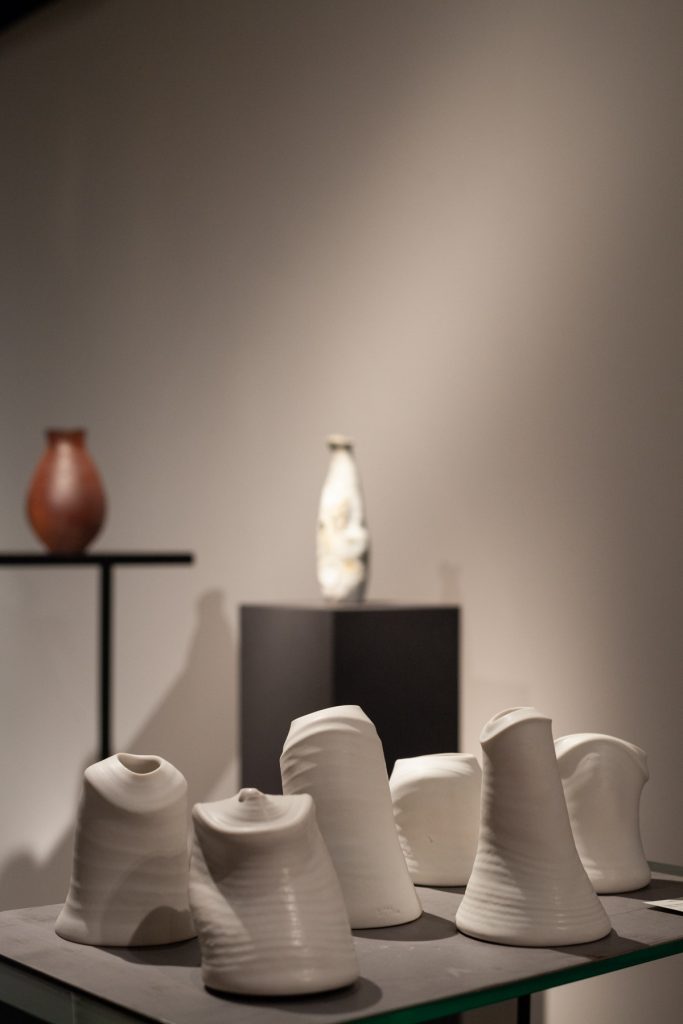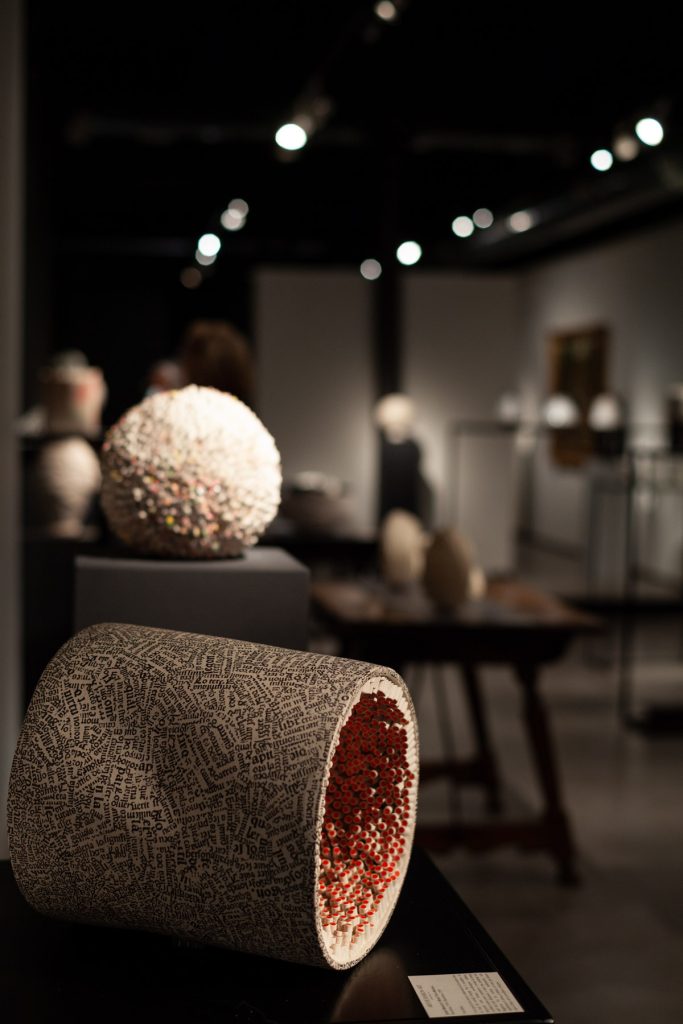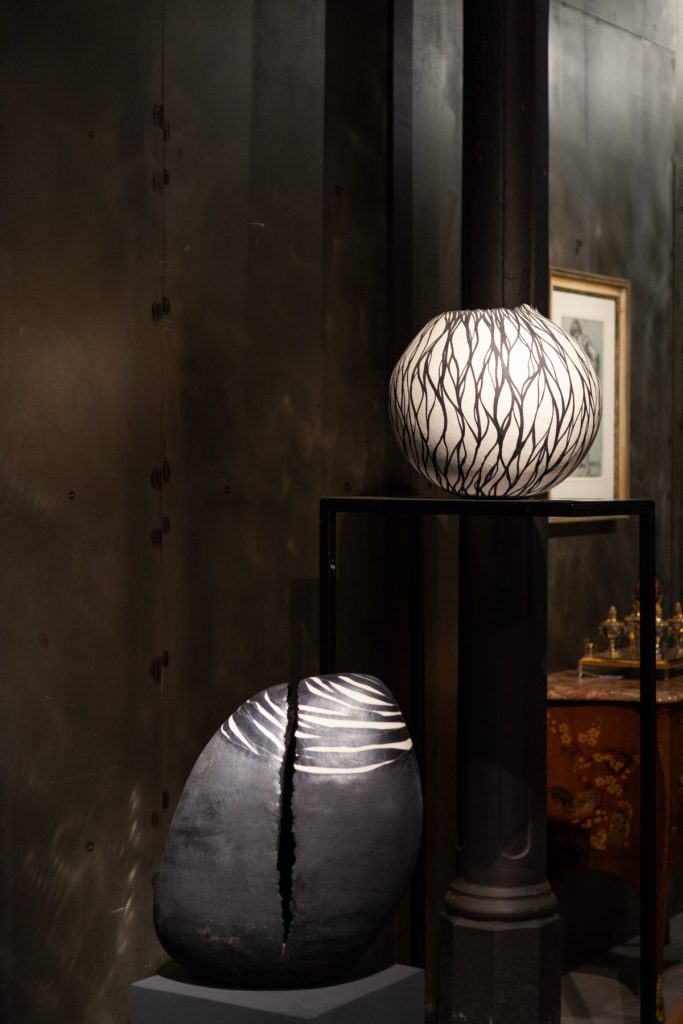Josep Llorens Artigas, Corrie Bain, Carme Balada,
Barbaformosa, Maria Bofill, Ruth Cepedano, Claudi Casanovas,
Carme Collell, Roger Coll, Rosa Cortiella, Mia Llauder, Dameon
Lynn, Madola, Jordi Marcet i Rosa Vila-Abadal, Nuri Negre,
Caterina Roma, Joan Serra, Penélope Vallejo
The exposition The art of emptiness is a chronological journey through the work of the most outstanding ceramists of the last decades, starting with Josep Llorens Artigas, father of contemporary Catalan ceramics.
In these works, the artists present their particular definition of the concept of emptiness, of the relationship of the material, the clay, with the space that contains or surrounds it. In fact, emptiness is a silent companion of ceramics throughout its history, which is also the history of humanity itself. As Lao Tzu wrote in his Taoist treatise in the s. VI a. C .: “The bowl is made of empty clay, and thanks to that void it fulfils its purpose […] So, that which exists serves to be possessed, and that which does not exist serves to accomplish its function.”
However, what began in the Neolithic as a giant leap in the quality of life and the possibilities of social development continued to evolve throughout the centuries, refining and adapting to the aesthetic taste and needs of an increasingly sophisticated society. Although in ancient Egypt vases were already used for decorative purposes, it was in ancient Greece that the ceramic vessel became an object of infinite narrative and symbolic possibilities: ceramics was born, halfway between utility and objet d’art, symbol of the power of the elites. There was a normative form for each use, and the application of decorative elements allowed the development of historical, war, religious themes, etc. Therefore, the ceramic container became an artistic piece of the first order.
From then on, and throughout the centuries, ceramics has always been an everyday and utilitarian element; only a few times has it been considered a work of art. In fact, the more refined the culture, the more important the clay object was; investing in fragile objects was also a way of demonstrating power and wealth.
The exhibition tour includes four generations of artists who have explored ceramics as the main means of expression. Although their work does not necessarily respond to the aesthetic canon of an era, it does allow us to see how ceramics has evolved from the moment it shed the exclusive legacy of tradition. Artists who began looking for new ways of expression through clay, towards the modernization of ceramics, with new practices and a contemporary look, exhibit their work alongside the younger generations, heirs to that legacy, who at the same time follow their own path of artistic inquiry: influences, inspirations and reverberations that resonate in the fullness of the void.




Video of the guided tour








